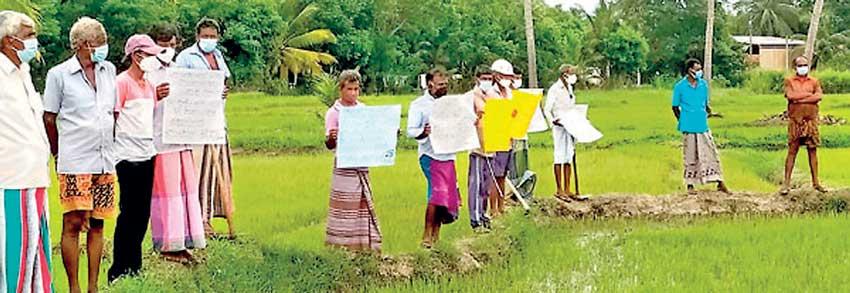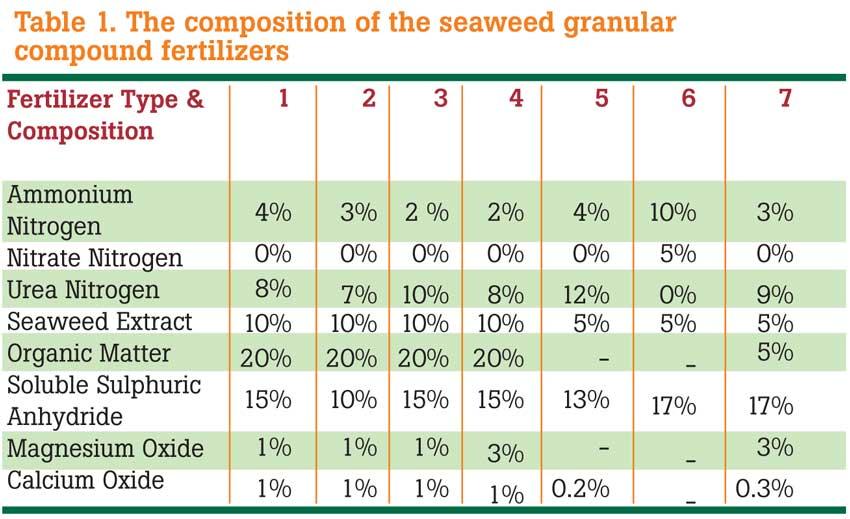18 Oct 2021 - {{hitsCtrl.values.hits}}

 In his novel published in 1891, tiled ‘The Light that Failed’, Rudyard Kipling wrote the phrase ‘biting the bullet’ to express the thought that fortitude can be gained by ‘biting a bullet’! As things are, should the President and government continue ‘biting the bullet’ or compromise in sincerity as discretion is the better part of valour.
In his novel published in 1891, tiled ‘The Light that Failed’, Rudyard Kipling wrote the phrase ‘biting the bullet’ to express the thought that fortitude can be gained by ‘biting a bullet’! As things are, should the President and government continue ‘biting the bullet’ or compromise in sincerity as discretion is the better part of valour.
The farmers have a genuine grievance in that there is no fertiliser, organic or inorganic. And organic fertiliser is not something that can be produced overnight. They are adamantly up in arms and it would appear most likely that paddy and other arable crop cultivations will incur huge production losses.
Farmers in the Mahaweli and other irrigated lands have taken up the unyielding stand that unless fertilisers are available, they will not cultivate this Maha season. Crop losses without fertiliser and other inputs can be as high as 40-50 percent, if not more, leading to a highly calamitous national situation. The same applies to plantation and other crops. Expert calculations reveal that tea yields too could decline by 50 percent.
More importantly, there are no readily available organic materials, vegetable, animal or other to meet the nutrient demand of the three million hectares of crops. Most plant-based organic matter has only about one percent nitrogen if not less. Assuming, however, that together with animal dung and other organic matter sources the figure is increased to 1.5 percent and on average a hectare of cropland requires 100kg N per year, the total annual organic fertiliser demand should be at least 200 million tonnes, if not more to provide the nitrogen requirement.
The average N demand for tea is at least 200kg/ha/yr and some vegetables and other crops too require more N than 100kg/ha/yr. The issue then is, how such a huge demand of organic fertiliser is to be met locally. The recent fiasco with the attempt to import a seaweed-based organic fertiliser from a Chinese enterprise, Seawin Biotechnologies, is well known. Samples tested locally were reported to be contaminated with a harmful bacterium, Erwinia and the importation was stopped.
Incidentally, the local Chinese Embassy had the audacity to contest the report of our quarantine authority, that the culture of the microbe could not have been done in the three or four-day period as reported but a senior professor of microbiology of the Peradeniya University and other specialists in the field have debunked the embassy claim.
The supplier claims that fertiliser is heated to a temperature of 600 degrees centigrade to kill microbes. If so, how was the live pathogen detected. At this temperature not only microbes but also nitrogenous compounds should break down. Then how is the nitrogen replenished?

According to the company’s brochure on ‘seaweed granular compound fertiliser’, there are seven fertiliser formulations available for sale comprising nitrogen (N) phosphorus (P2O5) and potassium (K2O) and nitrogen is replenished as ammonia, urea or nitrate. Please see Table 1.
So, evidently, it is a granular fertiliser mixture of chemical and organic materials. The supplier does not claim that the product is organic and he cannot as other than the ‘organic matter’ and the ‘seaweed extract’ the rest are inorganic chemicals. So, clearly, having heated to the high temperature and losing the nitrogenous compounds, inorganic nitrogenous chemicals have to be added to achieve the required nutrient composition. So, the product is no longer fully ‘organic’. Then, who is deceiving whom?
Moreover, these seaweeds are believed to be essentially harvested from the Yellow Sea off the coast of Quindío City, an area highly polluted with metropolitan waste and excessively contaminated with heavy metals such as arsenic, cadmium, lead and mercury. The status of these heavy metals are, however, not cited in the fertiliser composition table in the brochure.
Further, although the supplier has apparently promised a 10 percent nitrogen content in the formulation; it is impossible to get such a high value from seaweeds. On the whole then there are grey areas in the fertiliser deal.
The President and the government are apparently now gradually yielding to the countrywide fertiliser demand pressures of the farmers as evident from a recent news item that chemical fertiliser for corn will be imported. Then what about tea and other crops? As per the ‘grapevine’, there is evidence that some nano (chemical) fertilisers are also to be imported and the Tea Research Institute has been asked to work out how much ammonium sulphate as the nitrogen fertiliser source is needed for the country’s tea apparently because some stocks of the latter being available.
Ammonium sulphate has only 21 percent nitrogen, whereas that of urea is 48 percent. Because of production interferences, due to COVID, the urea prices have shot up by 35-43 percent, from April to September 2021 and the same should be true for other straight fertilisers.
Ammonium sulphate price globally is now reported to be about US $ 200/ metric tonne, whereas that of urea is about US $ 450. So, in terms of N contents in the fertilisers, the cost should be comparable except for the haulage.
However, over application of ammonium sulphate can be detrimental in that the added sulphur in the soil is reported to inhibit phosphorus uptake by crops affecting growth and yield. So, urea is the better option as the nitrogenous fertiliser when large quantities of it are needed.
In conclusion, it is the ignorance and obstinacy of the authorities that has pushed the country into this calamity. The minister after minister are obsessed with the ‘wasa visa’ myth as evident from their utterances both in Parliament and outside.
It is the general belief, without evidence that agrochemicals are the cause of many non-communicable diseases. No politician speaks about ambient air pollution, the leading environmental health risk factor locally and globally. Records reveal that nearly 3.5 million premature, non-communicable deaths, for example, in 2017, were from stroke, ischemic heart disease, chronic obstructive pulmonary disease, lung cancer, lower respiratory infections and diabetes.
The President should, as a matter of priority, obtain a report from the health authorities on this matter of agrochemicals and health. This false belief was aggravated as a result of the initial suspicion that the chronic kidney disease (CKD) of the Rajarata was caused by agrochemicals but none of the research supported this contention. Research evidence gathered over several years, especially during the period 2010 and 2018, by no less than five groups of researchers established that the most likely aetiolating agent is hard water and fluoride in the some dug wells especially on high ground, as those who drank such water were essentially the ones that contaminated the disease. Those who consumed water from the streams, reservoirs or dug wells in the plains did not contact the disease. Some of the research conducted by the current coordinator of CKD activities in the Health Ministry too supported this contention.
However, it is sad that the health authorities have failed to effectively brief the President, Health Minister and government in general on this vital matter. Had this happened, the President would not have rushed into this decision of ‘going organic’ virtually overnight.
23 Dec 2024 3 hours ago
23 Dec 2024 4 hours ago
23 Dec 2024 5 hours ago
23 Dec 2024 5 hours ago
23 Dec 2024 7 hours ago